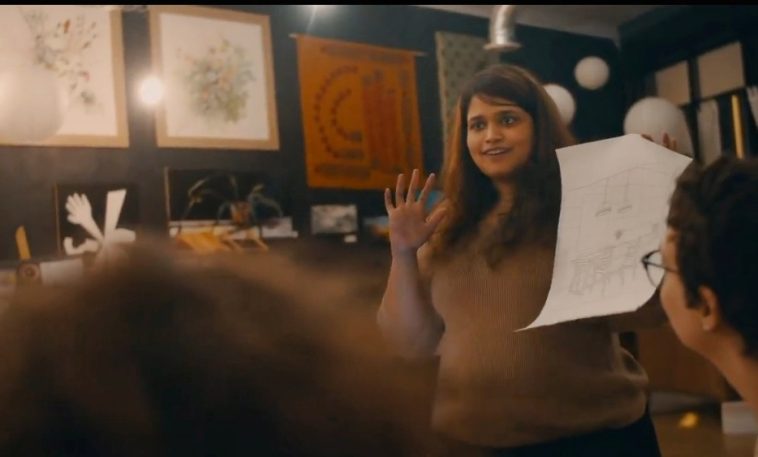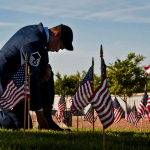Asmita Kerkar paints the portrait of a designer and architect not just building spaces, but constructing narratives of change and community. Kerkar stands out as a spatial designer deeply entrenched in the philosophy that design can be a significant catalyst for societal progress. Through her work, she demonstrates how every design choice, no matter how small, has the potential to ignite significant, long-lasting impact.
With a Master of Science in Environmental (Spatial) Design from the Art Center College of Design and a Bachelor of Architecture from KLS Gogte Institute of Technology, Kerkar boasts an impressive educational background. Her design philosophy is hinged on nurturing spaces that foster empathy and facilitate community engagement, grounded in the commitment to sustainability and inclusivity. She channels her passion into creating equitable environments, bridging the gap between design and social change through projects like ‘Street Respect’ and the development of co-designing toolkits for food rescue.
Kerkar’s professional experiences range from internships with Steelcase Inc. to significant roles at FFEN, where she applies her extensive design skillset, from research to user-centered design, and her adeptness with software tools like AutoCAD, Sketchup, and Revit. Kerkar is a recognized designer who epitomizes continuous learning and professional evolution, her journey reflective of her dynamic adaptation and openness to new ideas.
Now, let’s delve into Asmita Kerkar’s world of conscientious design and perpetual growth.
Hello, Asmita. It’s a pleasure to have the opportunity to talk about your professional journey. Looking back on your early projects, how do you feel your approach to design and problem-solving has evolved over the years? Can you share a specific instance where past experiences significantly shaped a more recent project?

Reflecting on my early projects, I realize how my approach to design and problem-solving has evolved significantly over the years. Initially, my focus was more on aesthetics and meeting functional requirements without fully considering the broader social and environmental impacts of my designs. However, as I gained more experience and was exposed to diverse perspectives, I began to prioritize empathy, sustainability, and inclusivity in my work.
One instance where past experiences profoundly shaped a more recent project was during an urban revitalization effort. Despite having a well-thought-out design, the project faced resistance due to a lack of community buy-in. This taught me the crucial importance of involving stakeholders from the beginning, listening to their needs and concerns, and co-creating solutions that resonate with the community.
In a subsequent project, the Fresh Food First Toolkits, I applied these lessons by engaging in extensive community outreach, organizing focus groups, and incorporating the feedback into the design process. This collaborative approach led to a more successful outcome and fostered a sense of ownership and pride among community members. It reinforced the value of empathy and dialogue in solving complex challenges, highlighting the importance of continuously evolving and adapting my design and problem-solving methods.
In a field that’s constantly evolving, how do you keep yourself updated with the latest design trends, technologies, and methodologies? Are there specific resources or practices you rely on?

First, I regularly engage in continuing education opportunities such as workshops, seminars, and conferences to learn about emerging trends and advancements. Additionally, I actively seek out industry publications, online forums, and design blogs to stay informed about current practices and innovations.
I also believe in the power of networking and collaboration with fellow professionals to exchange ideas and insights. Participating in design communities, both online and offline, allows me to gain diverse perspectives and learn from the experiences of others. Furthermore, I embrace experimentation and hands-on exploration of new tools and techniques to expand my skill set and adapt to changing landscapes.
Ultimately, my approach to staying updated involves a combination of continuous learning, networking, and hands-on experimentation, ensuring that I remain at the forefront of developments in the design field.
Can you describe a time when feedback drastically altered the way you approached a design problem? How do you integrate criticism into your growth and learning process?
Feedback plays a crucial role in refining and enhancing my design approach. A memorable instance where feedback drastically altered my approach occurred during a collaborative project focused on planning a layout for a food shelf. Initially, I developed a design that I believed was intuitive, visually appealing, and functional. However, after sharing it with the food shelf leader and gathering feedback about their day-to-day activities in the new space, I realized there were significant usability issues that I had overlooked, especially considering most volunteers working in the space were elderly, a detail I had initially missed when specifying equipment.
In response, I shifted my approach, conducting further research to better understand user needs and preferences. Seeking input from volunteers on their user experience needs allowed me to incorporate their insights and revise the design based on user feedback, ultimately creating a more user-friendly and effective interface.
Integrating criticism into my growth and learning process involves several key steps. Firstly, I approach feedback with an open mind, recognizing it as an opportunity for improvement rather than a personal critique. I actively seek feedback from diverse sources, including colleagues, clients, and end users, to gain different perspectives and identify areas for improvement.
Next, I carefully analyze and evaluate the feedback, identifying common themes and areas of consensus. I prioritize actionable feedback that offers specific suggestions for improvement and consider how it aligns with project objectives and user needs. Once I have identified areas for improvement, I take proactive steps to address them, whether through iterative design revisions, additional research, or skill development. I view each piece of feedback as a valuable learning opportunity that contributes to my growth as a designer.
Every designer faces unexpected challenges. Can you share a particularly tough project and explain how it pushed you to grow or adapt your skills in new ways?
One particularly challenging project I encountered early in my career involved redesigning a dental clinic for a client in the healthcare industry. Initially, the project seemed straightforward, but as I delved deeper, I faced several unexpected challenges that required me to grow and adapt my skills in new ways.
The main challenge was working within the constraints of strict regulatory requirements and compliance standards governing the healthcare sector. These regulations imposed stringent guidelines on anthropometry and accessibility, significantly impacting the design and functionality of the space. To navigate these challenges, extensive research was necessary to familiarize myself with the relevant regulations and ensure that the design adhered to all legal and ethical requirements. This involved collaborating closely with the client, who was the subject matter expert, to gain a comprehensive understanding of the regulatory landscape and identify potential compliance issues.
Additionally, I had to find creative solutions to balance regulatory compliance with the client’s objectives for the space, such as providing a relaxed and calm environment while promoting engagement with healthcare services. This required critical and innovative thinking about design choices, including furniture and equipment selections, color and texture choices based on mood enhancement, and the play of natural and artificial lighting.
Despite the initial setbacks and obstacles, tackling this project ultimately pushed me to grow and adapt my skills in several ways. I developed a deeper understanding of regulatory compliance and its implications for design, honed my problem-solving abilities, and gained valuable experience in navigating complex project requirements.
Overcoming these challenges reinforced the importance of effective communication, collaboration, and resilience in the face of adversity. By embracing the unexpected challenges and leveraging them as opportunities for learning and growth, I was able to successfully deliver a dental clinic that not only met the client’s needs but also exceeded their expectations in terms of compliance, usability, and functionality.
As technology and tools advance, how do you decide which new methods to incorporate into your work? Can you provide an example of a recent tool or technique you’ve adopted and how it’s impacted your design process?
As a designer, staying abreast of emerging technologies and tools is crucial to remain competitive and enhance productivity. In determining which new methods to incorporate into my work, I focus on those that align with the project’s specific needs and goals and offer clear benefits in terms of efficiency, quality, and creativity.
For a recent project, I applied parametric design principles to optimize the space planning of a large bowling alley slated for renovation into a food shelf. Utilizing parametric modeling software enabled me to quickly generate and examine numerous design iterations. This method allowed me to dynamically adjust various parameters, such as room dimensions, layout configurations, and circulation patterns, fine-tuning the design to meet the client’s specific needs and preferences precisely.
A significant advantage of parametric design is its support for data-driven decision-making. By connecting design parameters with performance metrics—like daylighting, energy efficiency, and occupant comfort—I was able to assess the impact of design choices in real-time and make informed adjustments to optimize performance. This approach was particularly beneficial as the project needed to be submitted for a grant application under a tight deadline, and leveraging this skill significantly expedited the process
My decision-making process for integrating new technology and methods into my work is guided by several key factors. Firstly, I make it a priority to research and stay informed about emerging technologies, trends, and methodologies relevant to space planning and design. I proactively seek out this information to ensure my approach remains cutting-edge. Secondly, before adopting new methods, I thoroughly assess each project’s specific needs and requirements. This involves evaluating the project’s scale, complexity, budget, and client preferences to identify the most suitable technologies or tools to achieve the desired outcomes. Finally, I am a strong proponent of trial and experimentation. I believe in the value of hands-on testing to ascertain the real-world effectiveness of new methods. This could mean conducting pilot projects, experimenting with prototype designs on personal projects, or exploring new software and hardware solutions through trial periods or demos when possible. This approach allows me to not only verify the practicality of new methods but also to refine and adapt them to fit the unique challenges of each project.
Who or what are your biggest influences when it comes to continuous learning and evolution in design? How do these influences manifest in your work?
Engaging with fellow designers, architects, and industry professionals through networking events, design forums, and online communities offers valuable opportunities for knowledge sharing, idea exchange, and exposure to diverse perspectives. Collaborating on projects and participating in design critiques fosters a culture of continuous learning and improvement.
Following thought leaders, innovators, and pioneers in design through their writings, lectures, and presentations inspires me to push creative boundaries, explore new design paradigms, and embrace innovative approaches. Their experiences, insights, and visionary ideas catalyze my personal growth and design practice evolution.
Interacting with the community, listening to their needs, and understanding their perspectives are crucial for learning. Engaging in conversations, building relationships, and empathizing with others’ experiences deepens my understanding of social issues and informs my volunteering approach.
These influences are evident in my volunteering efforts, marked by a commitment to making a positive impact, building meaningful connections, and improving individual and community well-being. By leveraging the knowledge, skills, and experiences gained through volunteering, I aim to create positive change and inspire others to contribute to the greater good.
Looking forward, what skills or knowledge are you most interested in acquiring or improving upon? How do you plan to achieve these learning goals?
One skill I am eager to develop is my proficiency in cross-cultural communication, which will enable me to engage more effectively with diverse individuals and communities, fostering understanding and collaboration across cultural differences. I am also interested in enriching my knowledge in project management, and to this end, I am currently pursuing my Executive Master of Science in Strategic Management. Seeking mentorship and guidance from professionals who are willing to offer valuable perspectives and practical advice has always proven to be helpful as I work to improve my skills in these areas.
Another key aspect is continuous self-assessment and reflection, where I regularly assess my progress toward achieving my learning goals and reflect on areas for improvement. By identifying strengths and weaknesses, I can adjust my learning strategies and focus on areas that require further development.
How do you share the knowledge and experience you’ve gained with others in the field? Can you talk about a time when mentoring or collaboration significantly contributed to your professional growth?
Sharing knowledge and experience with others in the field is essential for fostering growth and innovation. I have actively participated in mentorship programs, guiding individuals with intellectual disabilities to navigate a career in the industry. By sharing insights, providing feedback, and offering advice on navigating challenges, I help them learn self-advocacy and build assets based on their interests. This collaboration has been a learning experience for both me and my mentee.
Collaboration is another avenue through which I share and gain knowledge. Volunteering with FFEN early in my career, while still studying for my master’s, gave me the platform to share the knowledge I gained about the importance of space psychology and co-designing with the organization. This experience led to professional growth as I started working with FFEN to develop a framework for the organization on designing food shelves that are trauma-informed, as well as working on co-designing tools to help reduce the wastage of rescued food and support food shelves to preserve the freshness of the rescued food.
Overall, mentoring and collaboration have been integral to my professional growth, allowing me to both share my knowledge and learn from others in the field. These experiences have enriched my skill set, expanded my perspectives, and reinforced the importance of continuous learning and collaboration in the design profession.
As we come to the end of our insightful conversation with Asmita Kerkar, it’s clear that her journey in design is much more than creating functional spaces—it’s about affecting change, one thoughtful step at a time. Kerkar’s unwavering commitment to continuous learning and adaptation is not only a personal triumph but also a beacon for the design community. Her story encourages designers and architects alike to embrace feedback, stay abreast of emerging trends, and employ their craft as a powerful tool for social good.
For those who aspire to follow in her footsteps, Kerkar’s message is one of empowerment and collective progress. Join the conversation, challenge the norms, and let’s collaborate to craft impactful spaces that resonate with humanity and the environment alike. The journey of learning never ends, and together, we can redefine the spaces we inhabit, one design at a time.




